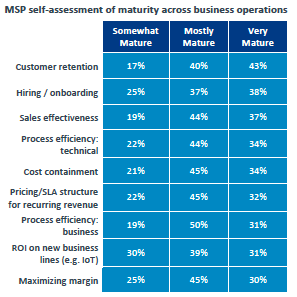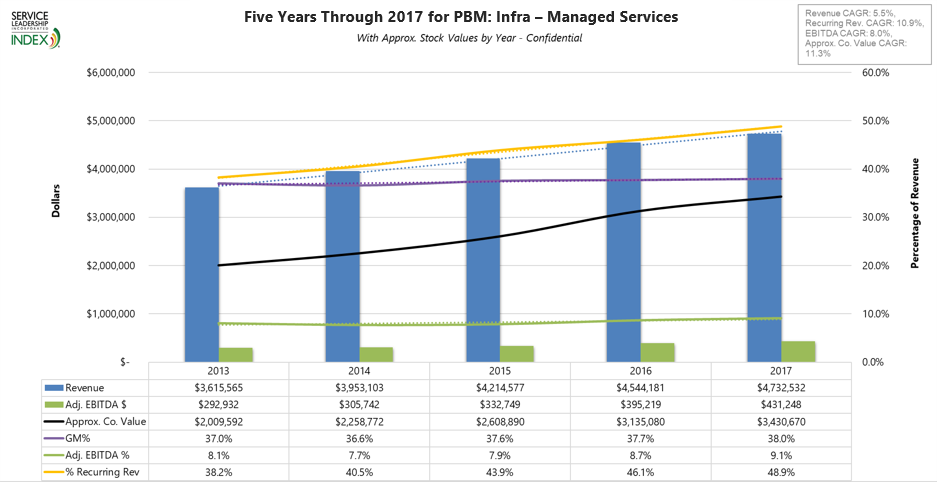In 2020, IDC projects $114.5B in spending on managed services in the US market, up from $112B in 2019.
According to a recent report by CompTIA, today’s managed services providers are optimistic about the current state of the market and the prospects for its continued performance over the next two years. This optimism stems from the opportunities that lie in new technologies and in entering new market segments, and the hope that these opportunities will lead to increased MSP profit margins.
However, while emerging technologies like Internet of Things (IoT), artificial intelligence (AI), and even drones are providing new potential revenue streams for MSPs, traditional services like networking still make up the majority of MSP revenue. That’s because, like it or not, connectivity and networks are the foundation of business — and the key to high-quality experience, retention, and profitability.
Margin Erosion Challenges MSPs
Only 3 in 10 MSPs feel they are doing a great job at maximizing MSP profit margins. This is unsurprising and speaks to the need to optimize business functions such as sales, cost containment, and process efficiency.

Source: Trends in Managed Services Report 2020
A study by the Service Leadership Group found that MSPs ranking in the top quartile for profitability consistently delivered EBITDA about three times higher than MSPs with median profitability. Low EBITDA margin indicates a business is unprofitable or likely selling based on price. High EBITDA margin suggests stable profits based on a solid value proposition.

Source: Service Leadership Index
Since most cash cows are traditional services like networking, it’s no wonder MSP profit margin is such an issue. After all, network services are a rapidly commoditizing market with shrinking margins.
As such, service providers are looking for ways to drive greater MSP profit margins. Here are five ways they can do just that:
5 Ways MSPs Can Boost Profit Margins

1. Audit the Customer Base
Not all customers are profitable — some even cost money! One way to boost MSP profit margins is to audit the existing customer base. Rank customers according to revenue, customizations, time investment, potential for process/service automation, and more. After weighing all the factors, decide if more margin could be made on customers that use more repeatable, out-of-the-box services.
For example, Service Leadership quoted one MSP executive who terminated 23% of his customer base. As he put it, these customers comprised just 8% of gross margin dollars but “80% of my heartburn.” With the extra time recovered, he soon closed three new contracts, which more than replaced the terminated client revenue at a materially higher profit.
2. Reevaluate Vendor Pricing and Requirements
While many technology buyers are tempted to make decisions based on brand familiarity, this approach may not deliver on the actual use cases, business requirements, or sufficient MSP profit margins.
Beware of vendor licensing models that appear cheap but include hidden charges in the form of term-based support contracts or bandwidth-based pricing. To arrive at a true cost-per-customer, evaluate the cost of hardware required to support the current and future number of customers, their branch offices, and throughput. And make sure your vendor quotes are sized to support multiple end customers. Also scope in the cost of installation, configuration, and ongoing management, especially if external Professional Services are required at extra cost. These resources may even apply their own support contracts.
In this way, service providers can get a more realistic picture of MSP profit margins and a better understanding of provisioning and support costs.
Turnium offers the best value SD-WAN on the market for MSPs, charging a flat rate per site per month, rather than charging based on the amount of bandwidth used. Service providers only pay for what they use to generate revenue.
Further, Turnium core licenses are free so service providers can turn up as many core nodes in as many data centers as they need. And, since Turnium’s core nodes are multi-tenant, service providers can get a high degree of customer revenue density on each node.
The best part of Turnium’s pricing is that it allows service providers to control their own MSP profit margins. By effectively purchasing wholesale, service providers can control markup, bundling, and margins.
3. Upsell High Margin Services
One of the key benefits of an MSP business model is the ability to upsell as customer trust grows. This enables you to upgrade an entry-level solution to a more complex and complete solution. Many customers onboard with an MSP by adopting basic connectivity or network services. However, as these customers grow, so too does their requirement for more storage and network infrastructure, more application services like VOIP, more end-users, and more extensive infrastructure management.
This provides MSPs with a wonderful opportunity to position themselves as a trusted advisor, helping the customer to form a technology roadmap to meet basic business needs and address emerging technology needs down the road. The results can be high, long-term MSP profit margins.

4. White Label Where Possible
Service providers are looking for ways to differentiate to attract new customers, maximize revenue, and boost MSP profit margins.
White labeling a technology platform can help MSPs enter a new market rapidly, bundle a new solution with their portfolio to differentiate and compete more effectively, and reduce price pressure and the associated margin reduction.
As an OEM software platform, Turnium gives MSPs ownership and control of a white-label SD-WAN solution. MSPs can sell SD-WAN under their own brand name and increase core product sales (e.g. SaaS, IaaS, NMS, Security-as-a-Service) for both colocation and cloud service provider customers.
And MSPs can do this under their own brand using their own infrastructure by delivering a hybrid SD-WAN/Traditional network solution. End customers can preserve critical aspects of their network while modernizing edge cases, remote sites, and branch office networks to make them more cost effective.
5. Maximize Hardware Usage
54% of MSPs say services are mostly delivered and managed via an internal network operations center (NOC) running on firm-owned infrastructure.
However, many vendors require the purchase of proprietary hardware to gain SD-WAN services. And in many cases, the hardware is a basic white-box platform that has had a custom faceplate and some software added to boost the sticker price.
Proprietary hardware requirements don’t just inflate the cost of implementing SD-WAN for the end customer, they’re completely counter to the concept of a “software-defined” offering.
Good SD-WAN solutions are hardware agnostic so that MSPs can buy or build their own boxes based on their own specifications. With Turnium, there are no hardware requirements.
To learn more about Turnium’s unique white-label SD-WAN, download our free white paper or contact us today!
